Cassava leaf stew is a delicious and rich savory dish made with goat meat, crushed cassava leaves, and many additional seasoning ingredients. It is easy to make and even easier to pair with other African accompaniments.
Today, we will look at exactly how to cook cassava leaf stew from scratch. If I do say so myself, my recipe uses the best professional practices that help develop and enhance the flavors of each ingredient. It is a lengthy process, but one that is well worth the effort!
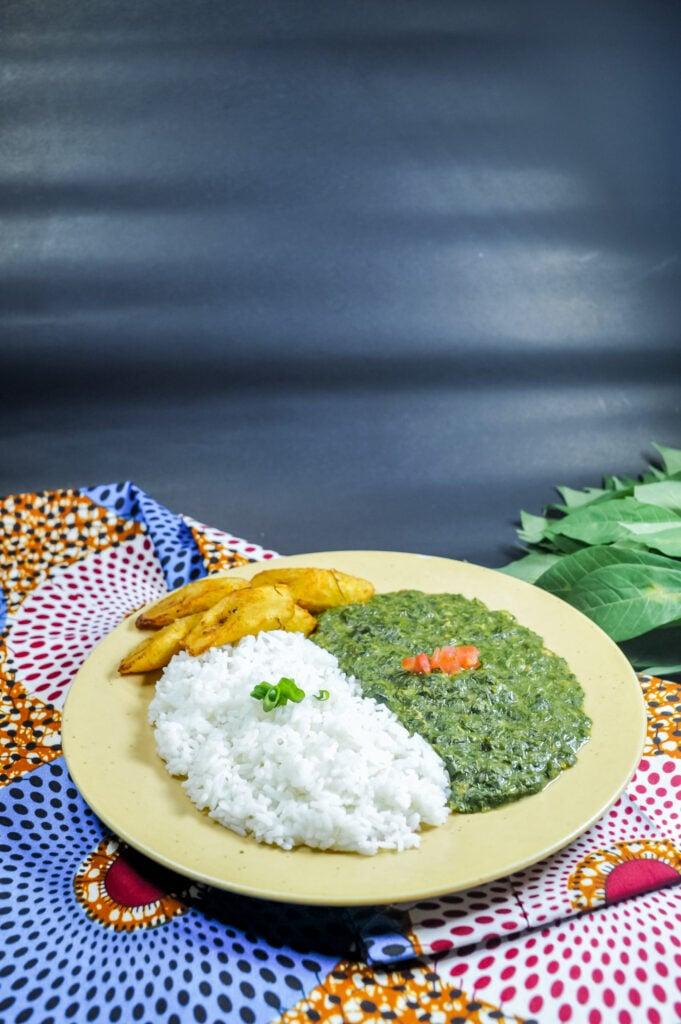
What Is Cassava Leaf Stew?
The cassava plant (aka yuca) is native to South America. Likely, they were the first to make any type of cassava stew using these leaves.
However, cassava leaves are very popular in African countries as well and are considered an essential part of African cuisine.
Now, back to today’s recipe specifically. We will be making a traditional cassava leaf stew. I am not sure exactly where this recipe is originally from, but many of my African friends from different countries use this recipe format.
Today’s stew is primarily made from goat meat and cassava leaves. It also contains additional flavoring ingredients like spices, aromatics, and stock.
There are a ton of additional ingredients you could add to this recipe. These include smoked fish, tilapia, crayfish powder, and oxtail. I tried to make my recipe with easy-to-find ingredients that are equally tasty.
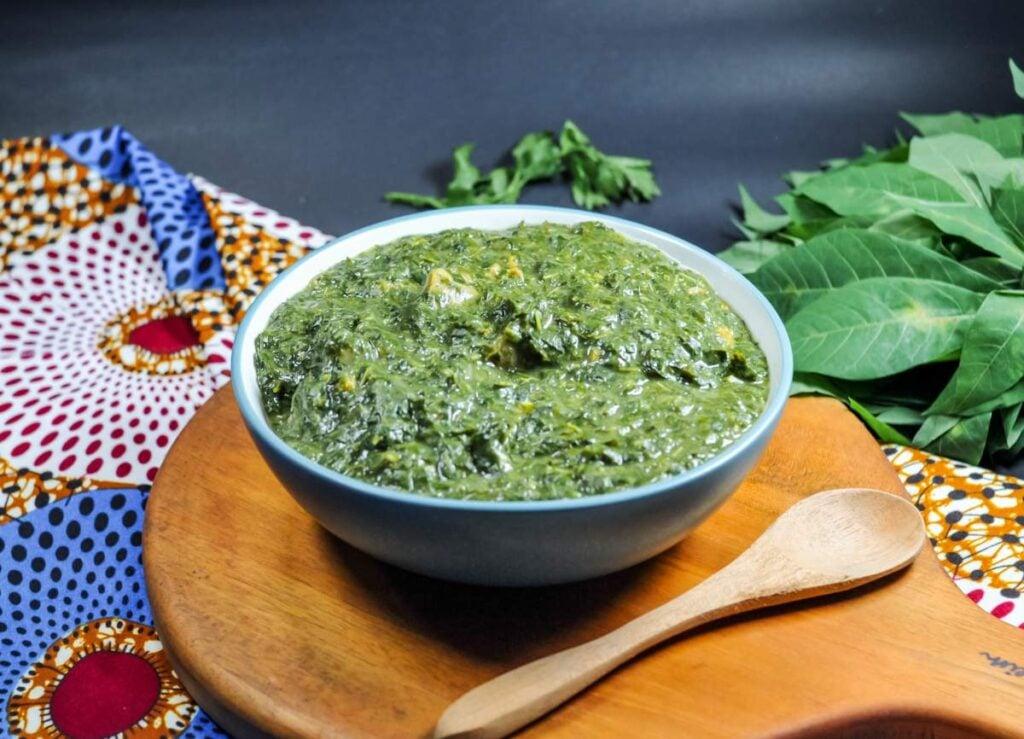
What Do You Need For This Stew Recipe?
I love using goat meat. It is hard to find in some areas, but I don’t make this recipe without it. If you want to, you could use oxtail instead.
Then, you obviously need cassava leaves. These leaves are relatively easy to find. They usually come frozen and crushed. If you do manage to get any fresh ones, crush them in a blender before adding them to your stew.
And finally, another unique ingredient I add is ogiri. Ogiri is a type of flavoring that is made from fermented and often roasted sesame seeds. So, you can roast white sesame seeds as a substitution if you cannot find ogiri.
The remaining ingredients are all easy to find and relatively affordable.
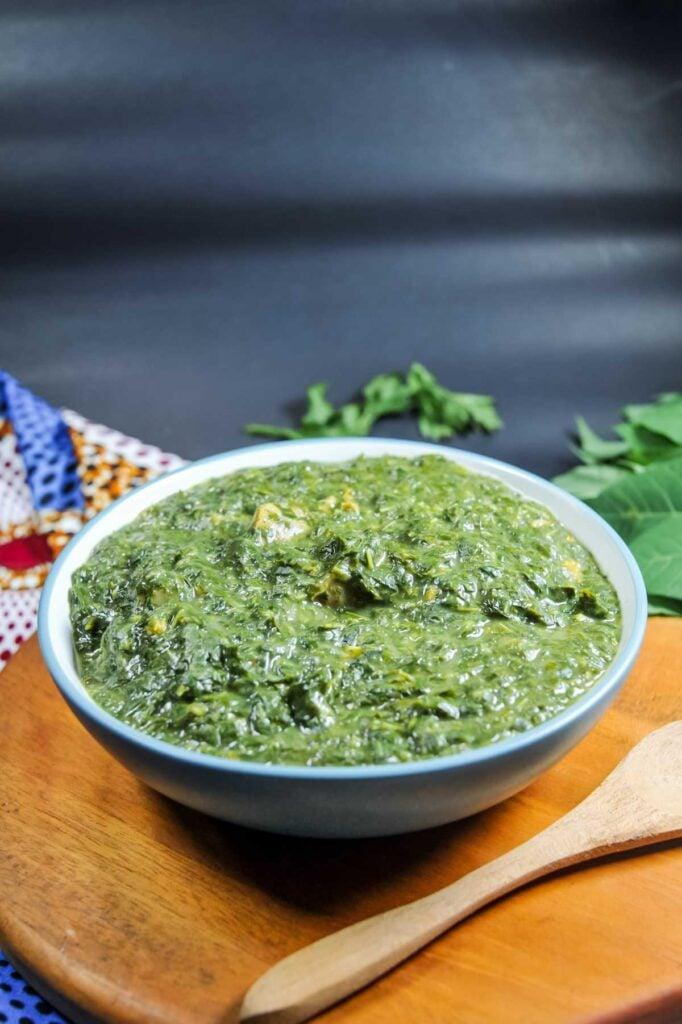
How To Make Cassava Leaf Stew
To be completely honest with you, the way I make my African goat and cassava stew takes a lot more time than most other recipes. But, that is for a good reason.
My technique allows each ingredient’s flavor to fully develop before you mix it with the rest of the stew. For example, browning the meat first allows the delicious savory goat flavors to develop and the surface to caramelize. These flavors aren’t naturally present in goats. So, if you just boil the goat with the stew ingredients, you won’t get an as-rich taste.
The same goes for ingredients like garlic, ginger, and chili. Cooking them over higher and dry heat allows them to release their flavors.
So, first I brown all of the ingredients and allow them to blend together. Then, I add the cassava leaves and liquid.
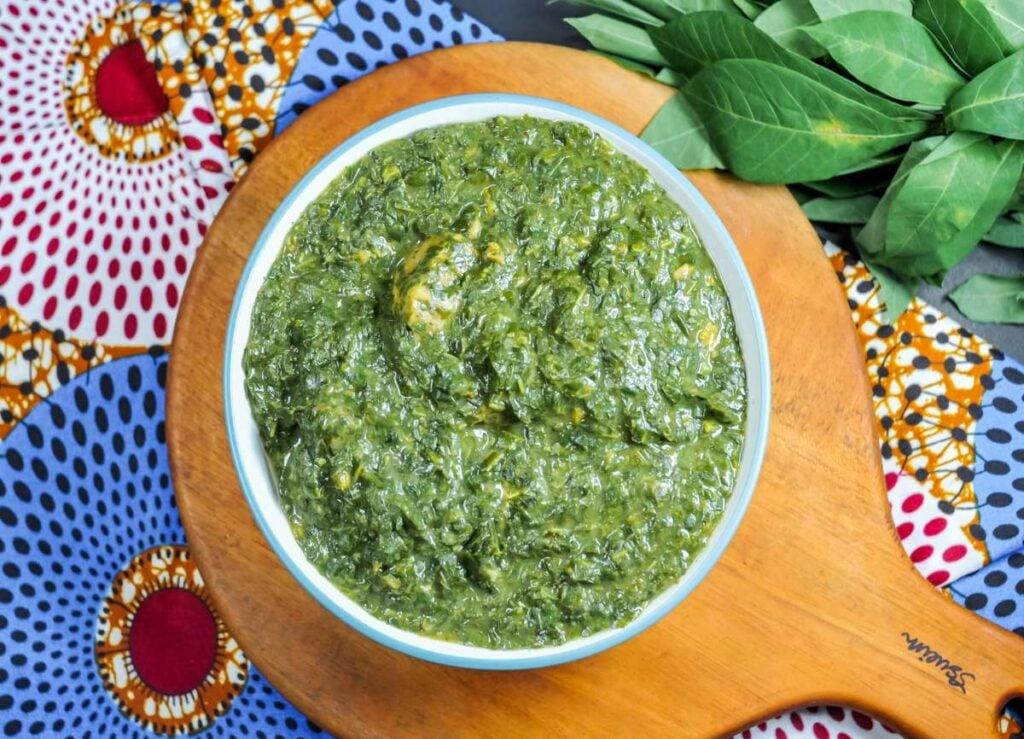
FAQs
Where did cassava leaf stew originate?
As I mentioned before, it is likely that the stew originated in Southern America, where the root first originated. However, today cassava leaf is mainly associated with African cuisine.
What do you serve with cassava leaf stew?
Because there isn’t an exact country this recipe originated from, you can serve it with any accompaniment from African cuisine. Swallows are some of my favorites because of how easy they are to make and how neutral their flavor is.
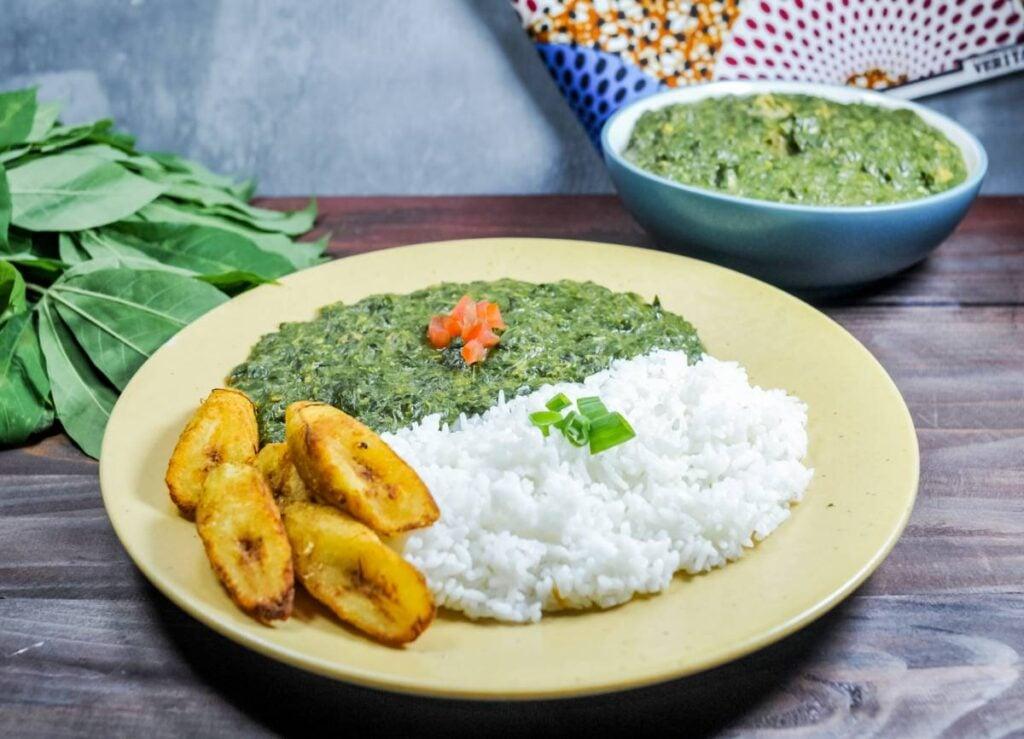
What does African cassava leaf soup taste like?
This stew has a very unique and complex flavor profile. It is very savory and has a ton of umami flavors. The umami profiles come from the ogiri (fermented sesame seeds). I highly recommend adding it even if it is hard to find or a little pricey. The cassava leaves themselves add a delicious herbaceous flavor that is slightly bitter. But, the rest of the seasoning ingredients help balance it out.
Is cassava leaf good for you?
Cassava leaves on their own are relatively nutritious. They contain a ton of vitamins and minerals which is pretty impressive for a herb. And, when it comes to cassava leaf stew, it isn’t exceptionally high in calories. Goat meat contains about 143 calories per 100 grams. And cassava leaves, only 37 calories per 100 grams of cooked leaves. Overall, it’s the flavoring ingredients that can add a lot more calories.
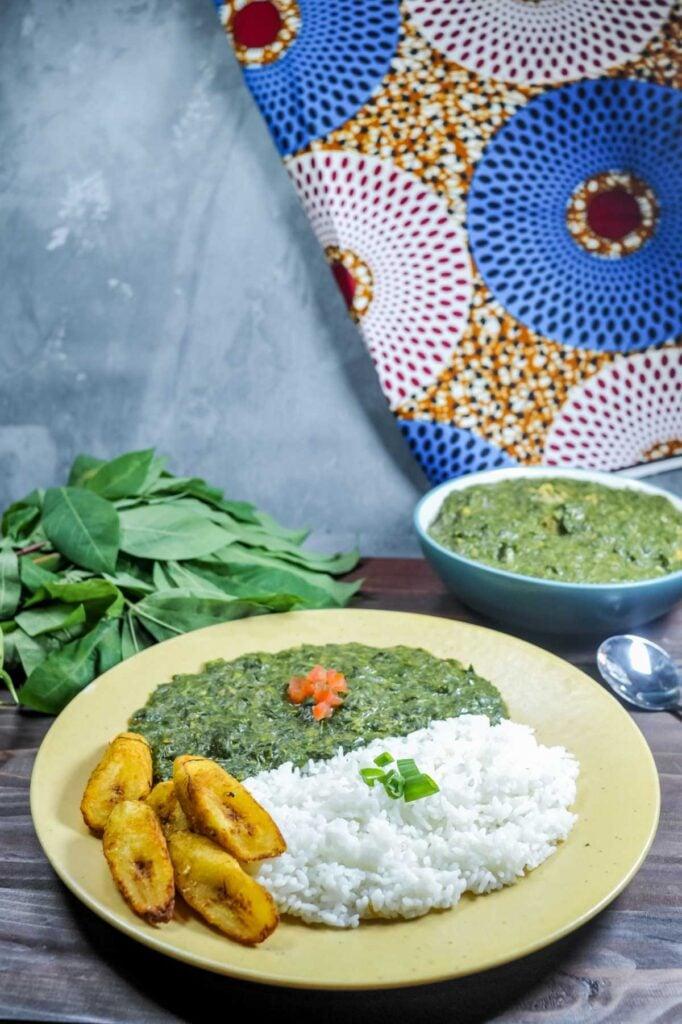
How long should you boil cassava leaves?
If you place them inside a pot and cover them with boiling water, they will be ready to eat or use in about 10 minutes. If you don’t cook cassava leaves well they remain tough and chewy. For my cassava leaf and goat stew recipe, I cook them for well over 20 minutes to ensure they are softened.
If you want to try some other African recipes
Easy Gbegiri Soup Recipe
Nigerian Pepper Sauce
Authentic Amala Recipe
Quick Ewedu Soup Recipe



